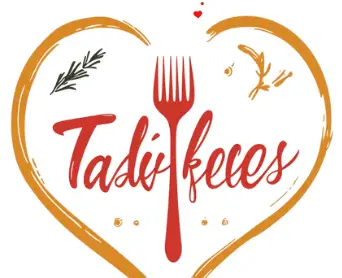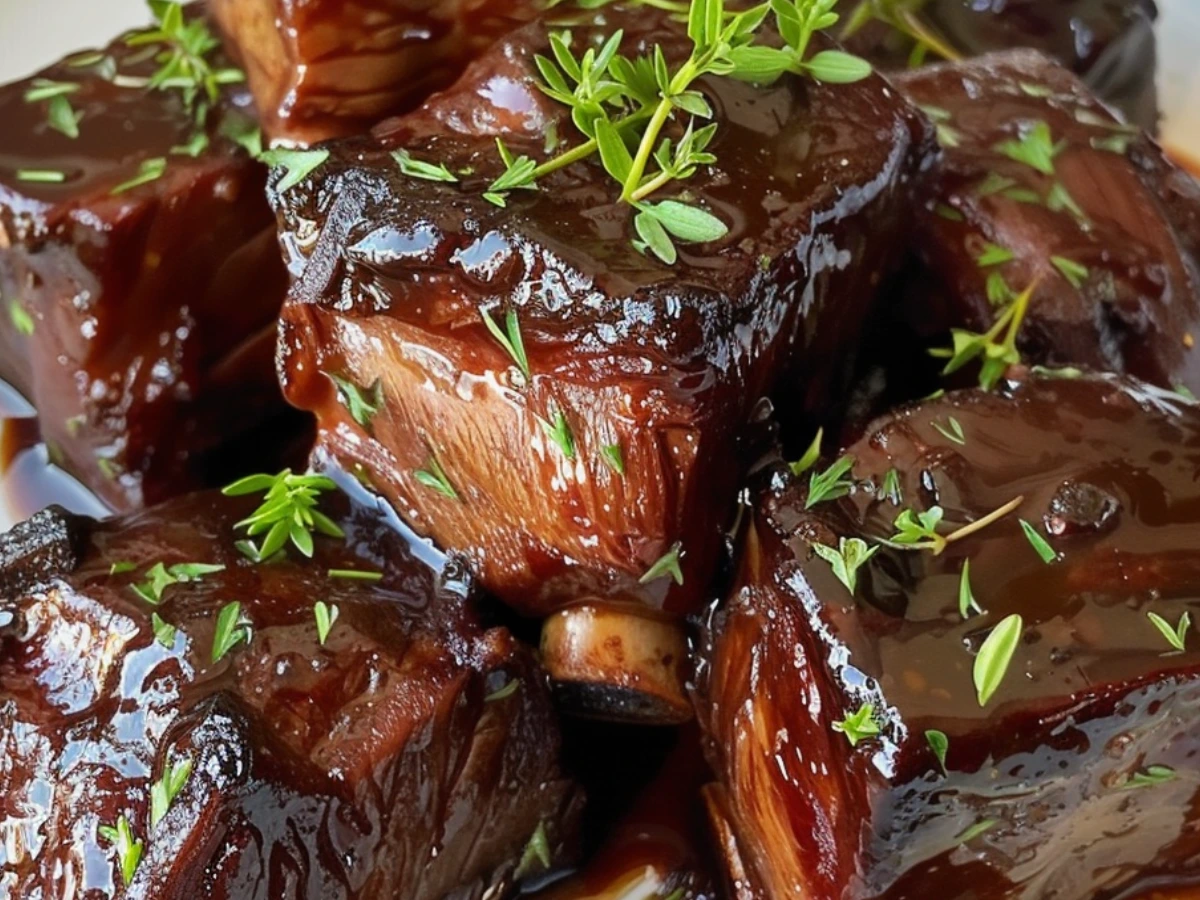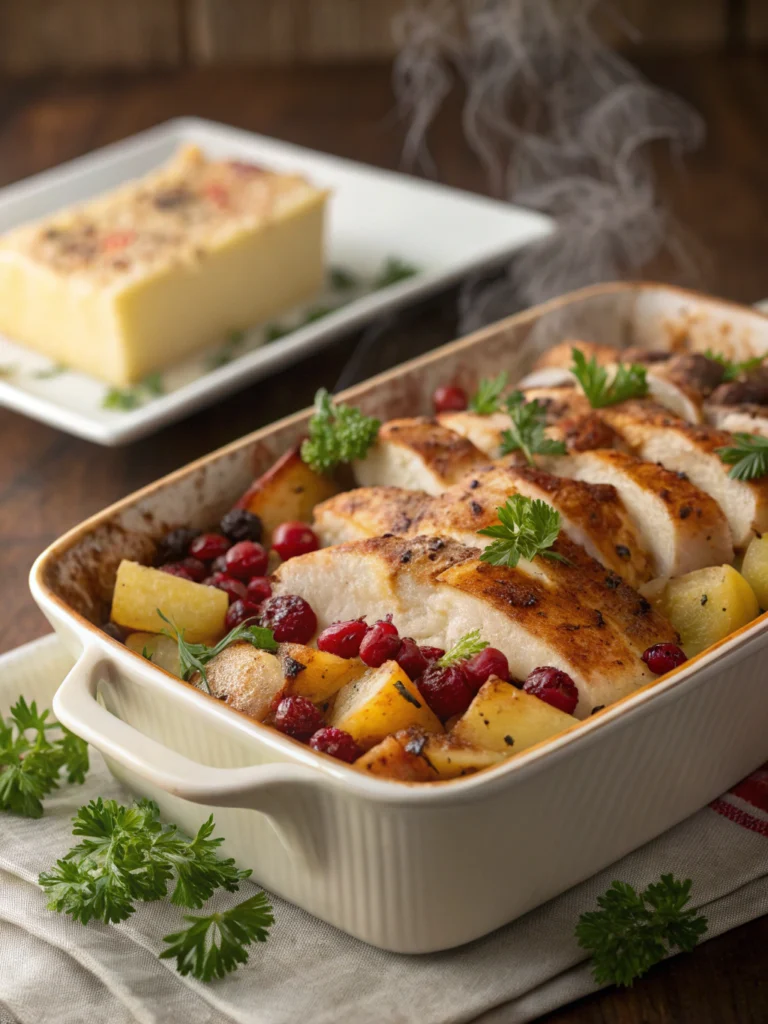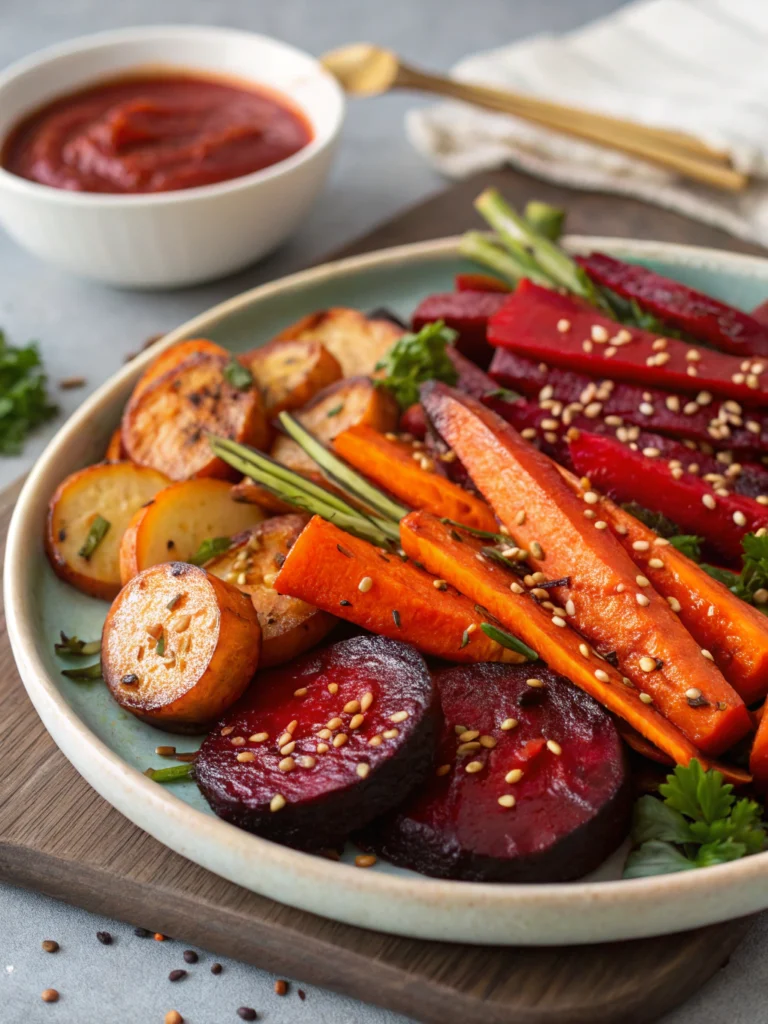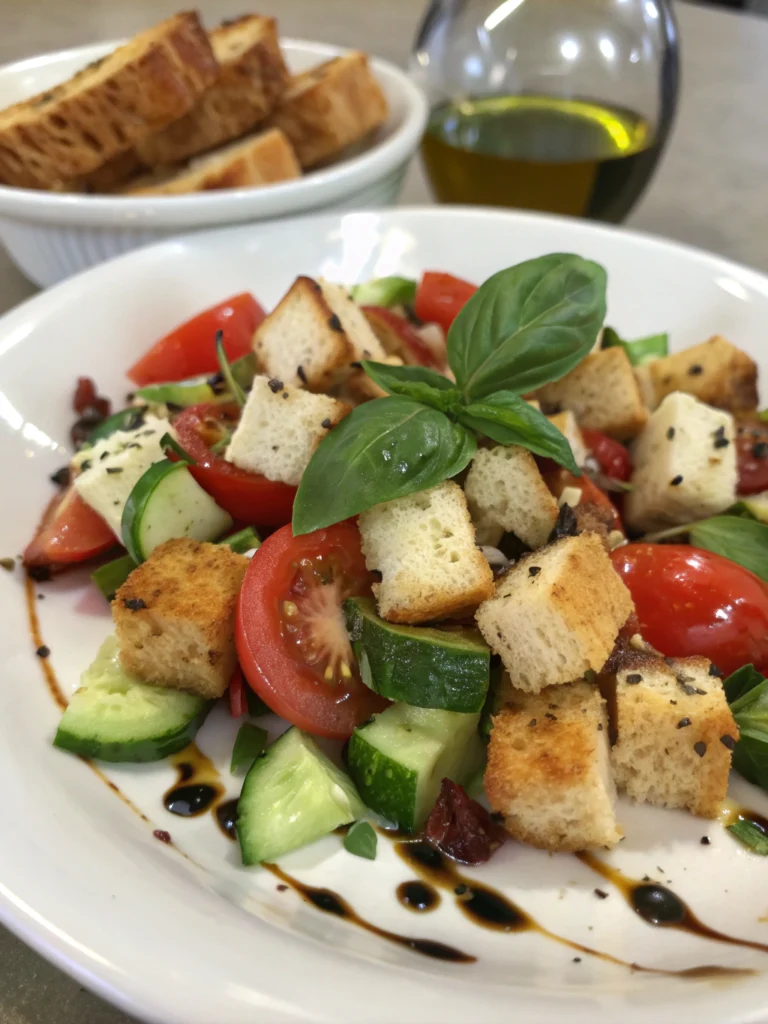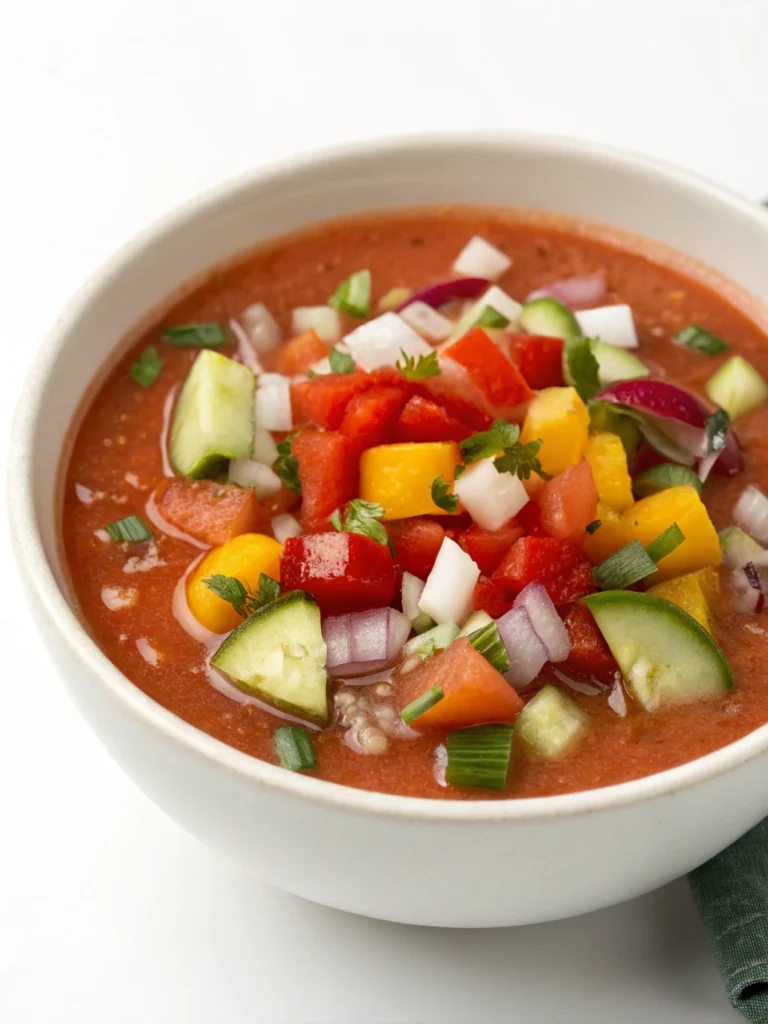There’s something special about a dish that can transport you to a cozy evening with loved ones, surrounded by the rich aromas of a home-cooked meal. For me, that dish is braised Beef Short Ribs Recipe, tender and falling off the bone, smothered in a rich, glossy red wine sauce.
Cooking beef short ribs can seem intimidating, but with the right techniques, it’s surprisingly straightforward. The key lies in slow cooking, which transforms this tougher cut into a melt-in-your-mouth delicacy. My perfected recipe delivers restaurant-quality results with minimal effort, making it perfect for both weeknight dinners and special occasions.
Key Takeaways
- Learn how to achieve tender, fall-off-the-bone beef short ribs with a rich, glossy sauce.
- Understand why beef short ribs are ideal for slow cooking and how their marbling enhances flavor and tenderness.
- Discover the fundamental techniques for braising short ribs to perfection.
- Get a comprehensive guide from selecting quality ribs to serving suggestions.
- Impress your dinner guests with a dish that’s both simple to prepare and gourmet in result.
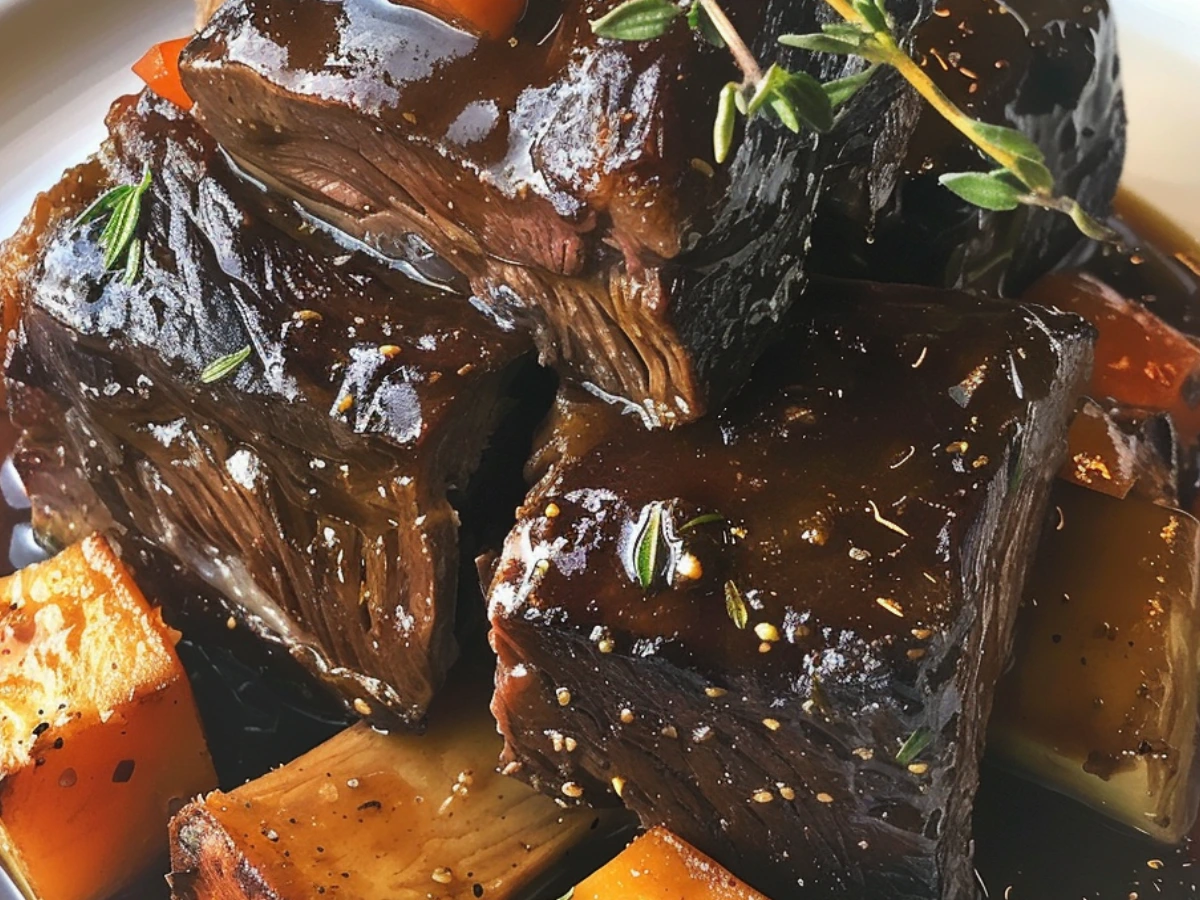
What Are Beef Short Ribs?
Beef short ribs, taken from the beef chuck portion of the cow, are a prized cut for slow cooking due to their unique composition. They are called “short ribs” because of their origin, not necessarily their length, as they are significantly shorter than full-length beef ribs. Typically, there are five of these small pieces of meat, which are too small to be sold as steaks but are perfect for slow cooking.
Cuts of Beef Short Ribs
There are two primary cuts of beef short ribs: English-cut and flanken-cut. The English-cut features meat sitting atop a single rib bone, while the flanken-cut contains cross-sections of multiple rib bones. Each cut has different cooking properties, making one more suitable than the other depending on the specific cooking needs.
Why Short Ribs Are Perfect for Slow Cooking
The unique combination of tough muscle, connective tissue, and fat marbling in short ribs makes them ideal for slow cooking. The slow cooking process breaks down the tough collagen into gelatin, resulting in a melt-in-your-mouth texture. Additionally, the fat content contributes to the exceptional flavor and moisture retention during cooking, making short ribs more succulent than other slow-cooking cuts like chuck and brisket.
Selecting the Best Beef Short Ribs
The secret to exceptional beef short ribs lies in the initial selection process. When you’re at the store, there are several factors to consider to ensure you pick the best ribs for your recipe.
Bone-in vs. Boneless Short Ribs
I recommend choosing bone-in short ribs as they are more flavorful and cook more evenly. However, you can substitute boneless short ribs if you prefer. The key is to understand how the presence or absence of the bone affects the cooking process and final result.
English-Cut vs. Flanken-Cut Ribs
English-cut and flanken-cut ribs differ in how they’re cut, affecting presentation, cooking time, and texture. English-cut ribs are cut parallel to the bone, while flanken-cut ribs are cut across the bone. Understanding these differences helps you choose the right cut for your needs.
Quality Indicators to Look For
When selecting beef short ribs, look for bright red meat and avoid any that’s turning grey. Check for marbling – a moderate amount of fat within the meat enhances flavor and juiciness. Also, consider the meat-to-bone ratio; more meat on the bone generally means a better eating experience.
The Perfect Beef Short Ribs Recipe
The key to a delicious beef short ribs dish lies in the preparation and the quality of the ingredients used. To achieve tender, flavorful results, it’s essential to start with the right components and follow a well-tested method.
Ingredients List
For my beef short ribs recipe, you’ll need the following ingredients: 3 Tablespoons of olive oil, 1 diced yellow onion, 3 chopped carrots, 8 whole beef short ribs (bone-in), salt and pepper to taste, 1/4 cup of all-purpose flour, 1 cup of dry red wine (such as Cote du Rhone or Pinot Noir), 2 1/2 cups of low-sodium beef broth, 2 Tablespoons of tomato paste, and 2 sprigs each of fresh thyme and rosemary. Having these high-quality ingredients ensures a rich and flavorful dish.
Using fresh aromatics like onion and carrots, along with a good red wine and beef broth, will enhance the overall flavor of the short ribs. Don’t forget to season with salt and pepper to bring out the best in the meat.
Equipment Needed
A crucial piece of equipment for this recipe is a heavy-bottomed Dutch oven or an oven-safe pot with a lid. This type of pot is ideal because it can be used on both the stovetop and in the oven, allowing for a seamless transition from searing the ribs to slow-cooking them. The heavy bottom of the pot also helps distribute heat evenly, preventing the ribs from burning.
Preparation Steps
To begin preparing the beef short ribs, first bring the meat to room temperature. This simple step helps ensure that the ribs cook more evenly. Next, season the ribs with salt and pepper to taste, then lightly coat them with flour for optimal browning.
Searing the short ribs in hot oil develops a deep brown crust that adds tremendous flavor to both the meat and the braising liquid. After searing, set the ribs aside and prepare the aromatic vegetables (mirepoix) by sautéing the diced onion and chopped carrots in the same pot. Finally, deglaze the pot with red wine, scraping up any browned bits from the bottom to maximize the depth of flavor in your final sauce.
Mastering the Braising Technique
Mastering the art of braising is crucial for achieving tender and flavorful beef short ribs. Braising is a cooking technique that involves cooking the ribs in liquid over low heat for an extended period.
Searing for Maximum Flavor
The first step in braising beef short ribs is to sear them at high heat to create a rich, caramelized crust. This step is crucial for developing the flavor of the dish. To achieve the perfect sear, make sure the ribs are dry and seasoned before placing them in a hot pan.
A good sear on the ribs will enhance the overall flavor of the dish. It’s essential to not overcrowd the pan and to sear the ribs in batches if necessary.
Creating a Rich Braising Liquid
The braising liquid is a critical component of the dish, as it infuses the beef with flavor and tenderizes it. A good braising liquid typically consists of a combination of dry red wine, beef broth, and aromatics such as onions and garlic.
To create a rich braising liquid, use a mixture of wine and beef broth, and add aromatics like onions, carrots, and celery. You can also add herbs and spices to enhance the flavor.
Low and Slow Cooking Method
The low and slow cooking method is essential for tenderizing the beef short ribs. Cooking the ribs in the oven at a low temperature for several hours allows the connective tissues to break down, resulting in tender and juicy meat.
To achieve the best results, cook the ribs in a covered pot in the oven at a low temperature (usually around 300°F) for 2-3 hours, or until the meat is tender and falls off the bone.
Alternative Cooking Methods
The versatility of beef short ribs allows for multiple cooking approaches, each with its unique benefits and outcomes. While traditional oven braising is a popular choice, other methods can produce equally satisfying results.
Slow Cooker Method
Using a slow cooker is an excellent way to cook beef short ribs with minimal supervision. To do this, follow the initial steps of the recipe (searing and creating the flavor base), then transfer everything to the slow cooker. Cook on low for 6-8 hours or high for 5 hours. This method ensures tender ribs and a rich, flavorful sauce.
Pressure Cooker/Instant Pot Method
For those short on time, a pressure cooker or Instant Pot can significantly reduce cooking time. Start by sautéing onions and carrots, then brown the ribs. Add wine to deglaze the pot, and cook on Manual/High pressure for 45 minutes. Allow the pressure to release for 15 minutes before opening the lid. This method yields tender results in under an hour.
Stovetop Method
Cooking beef short ribs on the stovetop is another viable option when an oven is not available. This method requires more attention, as you’ll need to maintain a consistent temperature and prevent scorching. Cook the ribs in a heavy pot on low heat for about 2.5 hours, ensuring the sauce simmers gently.
Comparing Results Across Methods
Each cooking method produces slightly different results. The slow cooker method yields fall-off-the-bone tenderness, while the pressure cooker method provides a quick alternative without sacrificing much flavor. Stovetop cooking allows for real-time adjustments to the sauce. Regardless of the method, adjusting liquid quantities and reduction techniques can help achieve a properly concentrated sauce.
Creating the Perfect Sauce
The crowning glory of a delicious beef short ribs dish is undoubtedly the rich, glossy sauce that accompanies it. This sauce is not just a complement to the meal; it’s an integral part of the overall flavor profile that elevates the dish to new heights.
Reducing the Braising Liquid
To create the perfect sauce, we start with the braising liquid. Reducing this liquid is a crucial step that concentrates the flavors and achieves the ideal consistency. It’s essential to reduce it slowly over low heat, stirring occasionally, to prevent it from burning or becoming too thick too quickly. This process not only intensifies the flavor but also helps in achieving that perfect glossy finish.
The key is to be patient and not rush this process. Allowing the liquid to simmer gently for an extended period will result in a rich, velvety sauce that coats the short ribs beautifully.
Wine Selection Tips
When it comes to selecting a wine for the braising liquid, the choice can significantly impact the final flavor of the sauce. I recommend using a full-bodied red wine, such as Cabernet Sauvignon or Merlot, as these wines have the structure and depth that complement the beef short ribs perfectly. Lighter wines, like Pinot Noir, lack the necessary body and won’t provide the same level of flavor complexity.
It’s also worth noting that you don’t need to use an expensive wine for slow-cooked recipes. The long cooking process transforms the wine’s character, making the difference between a $5 bottle and a $50 bottle almost negligible.
Thickening Methods for Glossy Perfection
Achieving the perfect consistency for the sauce is crucial. One effective method is to reduce the braising liquid as mentioned earlier. Another approach is to add a gelatin-rich stock to enhance the viscosity of the sauce. For an extra glossy finish, a small amount of cornstarch can be used, but this should be done sparingly to avoid making the sauce too starchy.
Skimming off excess fat from the surface of the sauce is also important for a cleaner flavor and more elegant presentation. Balancing the flavors by adjusting the acidity, sweetness, and seasoning will result in a perfectly harmonious accompaniment to the rich meat.
Conclusion
With the right technique and quality ingredients, beef short ribs can become a staple in your culinary repertoire. This recipe for tender, flavorful perfection is sure to impress whether you’re cooking for a casual family dinner or an elegant gathering.
To serve, consider plating the ribs over a bed of creamy mashed potatoes, spooning some of the rich sauce over the top. For leftovers, store the beef short ribs in a sealed container in the refrigerator for up to 3-4 days. You can also freeze this dish before or after cooking for up to 4-5 months.
When you’re ready to plate, garnish with fresh herbs to add a pop of color and freshness. This recipe is versatile and can be adapted for various occasions. I encourage you to experiment with different variations, using the basic technique as a foundation for other tough cuts of meat. Mastering this cooking method opens the door to a world of culinary possibilities, making it a valuable skill for any home cook.
By following this guide, you’ll be able to create a truly exceptional dish that’s sure to become a favorite. So, preheat your oven and get ready to enjoy a fall-off-the-bone tender beef experience.
FAQ
What is the best type of wine to use for braising short ribs?
I recommend using a dry red wine, such as Cabernet Sauvignon or Merlot, to add depth and complexity to the dish.
Can I use boneless short ribs instead of bone-in?
Yes, you can use boneless short ribs, but keep in mind that they may become dry if overcooked, whereas bone-in ribs retain moisture and flavor.
How long does it take to cook short ribs in the oven?
Typically, it takes around 2-3 hours to cook short ribs in the oven at a low temperature, usually around 300°F.
What are some good side dishes to serve with short ribs?
I find that mashed potatoes, roasted carrots, and sautéed onion make excellent side dishes that complement the rich flavor of short ribs.
Can I make short ribs in a slow cooker?
Yes, you can make short ribs in a slow cooker, and it’s a great way to cook them low and slow, resulting in tender and fall-off-the-bone meat.
How do I know when short ribs are done cooking?
Short ribs are done when the meat is tender and easily falls off the bone, and the internal temperature reaches at least 160°F.
